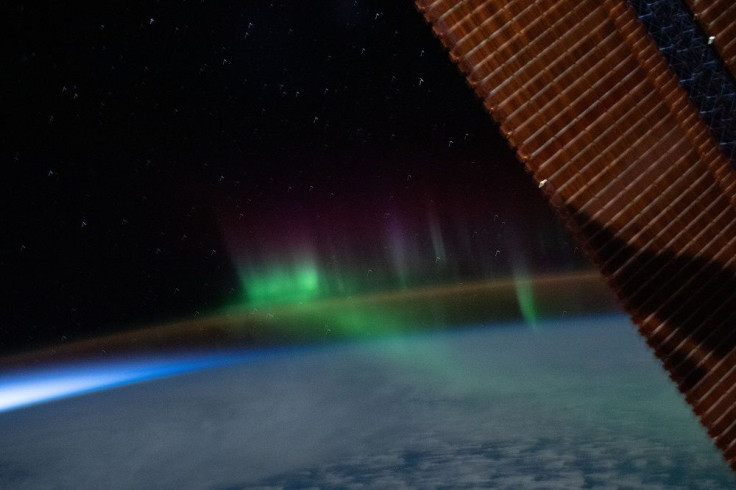Geomagnetic Storms Expected To Hit Earth This Week
KEY POINTS
- The Earth is predicted to be affected by geomagnetic storms this week
- Our planet has been experiencing geomagnetic storms of late
- Such events tend to increase the chances of spotting auroras
Authorities in the U.S. and U.K. confirmed that geomagnetic storms are set to hit the Earth this week. Some may get a chance to view stunning auroras.
Authorities predicted geomagnetic storms to hit the Earth this week as a result of the coronal mass ejections (CME) that erupted on the sun on March 10. Specifically, the National Oceanic and Atmospheric Administration's (NOAA) Space Weather Prediction Center (SWPC) posted an alert for a G2 (Moderate) geomagnetic storm watch for Monday and a G1 (Minor) geomagnetic storm watch that's "likely" for Tuesday, March 15.
The U.K.'s Met Office also has a similar forecast, with the early Tuesday issuance noting that the effects of the Monday event are expected to "start waning" in the following days. However, a "slow weak" CME observed on March 13 may also "give a glancing blow" to Earth on March 17, although the confidence is said to be "low."
"The risk of G1 intervals declines through Day 1, with mainly Quiet activity returning, although there is a very slight chance of an increase in activity if we do see the weak CME on Day 3 (17 Mar)," the Met Office noted.
Such smaller geomagnetic storms may not be cause for major concern, but they can still have various impacts. G2-scale geomagnetic storms are "moderate" events wherein power systems at higher latitudes may experience voltage alarms and spacecraft operations may also be affected. At G2 levels, auroras have been reported in the U.S. "as low as New York and Idaho."
G1 events, on the other hand are "minor" ones wherein fluctuations may be observed in weak power grids and there may also be "minor impacts" on spacecraft operations. Auroras may also be visible at higher latitudes, and migratory animals may be affected, according to the SWPC.
The Earth has been experiencing similar geomagnetic storms in recent days, Science Alert noted. According to the SWPC, G1 geomagnetic storm levels were observed on March 11 and 12 due to a March 6 CME, while G1 to G2 levels were also observed on Sunday due to the March 10 CME.
In some areas, people had the chance to spot the aurora borealis.
Did you see the #aurora last night?
— Met Office (@metoffice) March 14, 2022
We’d love to see your photos of the display of #northernlights which was seen last night across northern parts of the UK
Post your photos here using #LoveUKWeather and we’ll share our favourites later
As the Met Office noted that the effects of the March 14 event may begin to wane Tuesday, in some areas, this means a "decline" in the chances of spotting the aurora borealis in the Northern Hemisphere and the aurora australis in the Southern Hemisphere. At higher latitudes, however, aurora sightings are "still likely."
With the sun being more active of late as it goes toward the solar maximum of its 11-year activity cycle, predicted to be on July 2025, there may be more of such events and perhaps more chances to spot the stunning auroras.
Authorities and scientists are keeping a close eye on space weather as more powerful solar storms can actually be more disruptive. For instance, a G4 (Severe) geomagnetic storm may cause auroras to be visible in areas as low as Alabama and northern California, but it may also degrade satellite navigation and "possible widespread voltage control problems."
"Most of these eruptions miss Earth, but in the past CMEs have caused mass electrical blackouts and forced airplanes to change routes," the Center for Astrophysics noted. "One major reason to study space weather is to predict major CME events and prevent damage to power, transportation, and communication networks."

© Copyright IBTimes 2024. All rights reserved.












